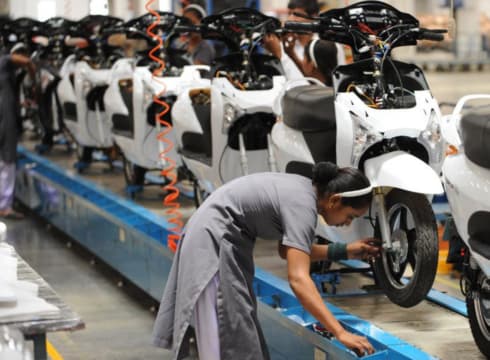The discovery of false localisation claims has reportedly prompted the government to slash the total beneficiary tally by about 43%
The MHI has cut the number of beneficiary two-wheelers under the FAME-II scheme from around 989,000 to around 564,000
The development comes days after the government slashed the incentive cap and demand incentive for electric two-wheelers
Inc42 Daily Brief
Stay Ahead With Daily News & Analysis on India’s Tech & Startup Economy
According to an investigation conducted by the Automotive Research Association of India (ARAI), nearly one in every two electric two-wheelers sold in India under the FAME-II scheme was sold with false localisation claims since last April.
The discovery has reportedly prompted the government to slash the total beneficiary tally by about 43%.
The development comes days after the government slashed the incentive cap and demand incentive for electric two-wheelers under the FAME-II scheme.
The Ministry of Heavy Industries (MHI) has cut the number of beneficiary two-wheelers under the Faster Adoption and Manufacturing of Electric (and hybrid) vehicles in India phase-II (FAME-II) scheme from around 989,000 to around 564,000, ET reported.
The scheme envisaged subsidising 1 Mn electric two-wheelers by April 2024.
The ARAI probe found multiple original equipment manufacturers (OEMs) relying on imports for key parts, including electric motors, controllers and chargers, per government sources cited by ET. The companies allegedly provided incorrect information on the locally sourced content of their vehicles, they said.
To recap, the FAME-II scheme mandates companies follow a phased manufacturing plan (PMP), which gradually increases the local sourcing of parts in an electric vehicle, to promote local manufacturing and avoid subsidising imports from countries like China.
However, many companies have reportedly failed to adhere to the PMP and misreported the percentage of locally-manufactured parts in their EVs, especially two-wheeler makers.
Previous media reports have implicated the likes of Ola Electric, Ather Energy, Hero Electric, and Okinawa Autotech for alleged violations of localisation norms and price manipulation to avail subsidies under the FAME-II scheme.
However, even though the government withheld subsidies worth around INR 1,400 Cr for over 400,000 electric two-wheelers sold under the FAME-II scheme since April 2022, it continued to include these vehicles to the official tally. Now, it has removed these units from its tally.
The removal also comes after the Society of Manufacturers of Electric Vehicles (SMEV) wrote to a parliamentary standing committee that the government was “trying to cover up” the shortfall in targets by including such units.
Impact Of Flouting FAME-II Localisation Norms
After the government discovered the irregularities around localisation norms under the FAME-II scheme, the MHI has changed its priority to promoting electric buses over consumer vehicles.
This was followed by a shift in budgetary allocation under the scheme, as the MHI increased the outlay for electric buses by INR 800 Cr, taking the total allocation close to INR 4,300 Cr, ET reported on 21 May.
At the same time, electric two-wheelers also saw an improved allocation to around INR 3,500 Cr. However, the government slashed the per-unit subsidy to support a larger number of vehicles.
Applicable from June 1, this move is set to increase the prices of electric two-wheelers by INR 25,000-40,000, taking them out of the reach of many customers in the process.
The issues around the FAME-II scheme also impacted EV registrations, as April 2023 saw a 23% month-on-month (MoM) decline. A total of 66,410 two-wheeler EVs were registered in April as against 86,187 units in March.
{{#name}}{{name}}{{/name}}{{^name}}-{{/name}}
{{#description}}{{description}}...{{/description}}{{^description}}-{{/description}}
Note: We at Inc42 take our ethics very seriously. More information about it can be found here.


